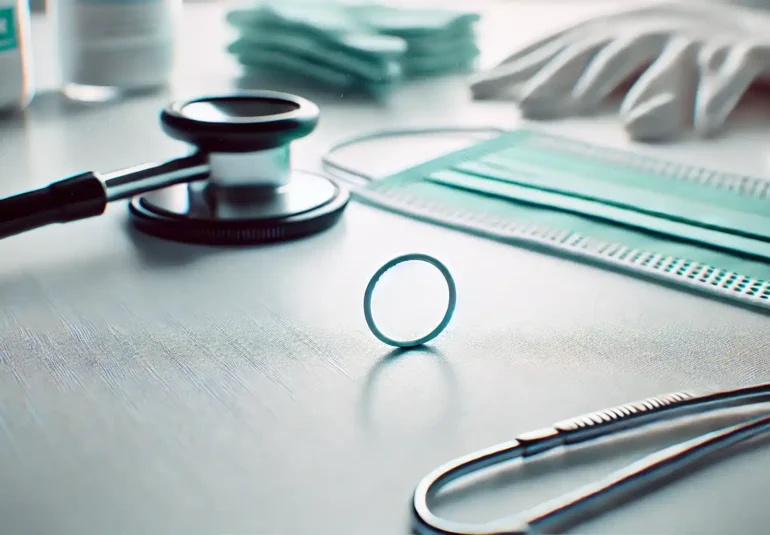
- Prevention Tips
-
by James
Hemorrhoids can be an uncomfortable and sometimes painful condition that many people experience during their lives. While there are a variety of factors that can lead to hemorrhoids, one factor that often gets overlooked is posture. Yes, the way you sit, stand, and carry yourself throughout the day can significantly influence the health of your rectal and anal area. Whether you’re working at a desk, relaxing on the couch, or even standing for extended periods, your posture plays a role in either relieving or exacerbating hemorrhoids.
In this article, we’ll explore how bad posture can worsen hemorrhoid symptoms and how good posture can provide relief. Additionally, I’ll offer practical tips on improving your posture to help prevent and manage hemorrhoids.
What are Hemorrhoids?
Before diving into posture, let’s briefly discuss what hemorrhoids are. Hemorrhoids are swollen blood vessels located in the rectal or anal area. They can be either internal, inside the rectum, or external, occurring around the anus. Hemorrhoids can result from increased pressure on the blood vessels in the rectal area, often caused by straining during bowel movements, constipation, pregnancy, or long periods of sitting.
Common symptoms include itching, discomfort, pain, and bleeding during bowel movements. While hemorrhoids are generally not dangerous, they can cause significant discomfort and impact your quality of life.
How Bad Posture Worsens Hemorrhoids
You might not immediately connect your sitting or standing posture to your hemorrhoid symptoms, but poor posture can significantly aggravate the condition. Here’s how:
1. Increased Pressure on the Rectal Area
When you slouch or sit in a hunched position, it places extra pressure on your lower back and pelvic floor. This pressure transfers directly to the rectal area, compressing the blood vessels and increasing the risk of hemorrhoid flare-ups. Prolonged sitting, especially with bad posture, leads to poor circulation in the pelvic region, which contributes to the swelling and inflammation characteristic of hemorrhoids.
2. Reduced Blood Circulation
Slouching or sitting improperly for extended periods can hinder blood flow to the lower parts of the body, including the rectal veins. Poor circulation means that the blood in these veins pools and becomes stagnant, which can cause or worsen hemorrhoid swelling. When the blood doesn’t circulate efficiently, it increases the likelihood of clot formation, which can result in painful thrombosed hemorrhoids.
3. Straining During Bowel Movements
Your posture can affect your bowel habits, especially when sitting on the toilet. Sitting in a hunched or improper position while using the bathroom can make it more difficult to pass stools, leading to straining. Straining is one of the leading causes of hemorrhoids, as it puts immense pressure on the veins in the rectal area. Improper posture increases the force you need to apply during a bowel movement, directly contributing to hemorrhoid formation.
4. Prolonged Sitting
Sitting for extended periods, especially without good posture, creates a high-pressure environment in your pelvic and anal region. Office workers, drivers, or individuals who spend much of their day sitting are especially prone to this issue. Sitting for too long causes the muscles in the lower back and pelvic floor to weaken, which in turn adds more stress to the rectal area and contributes to hemorrhoid development or aggravation.
5. Aggravating Symptoms
If you already suffer from hemorrhoids, poor posture can exacerbate your symptoms. When you sit in a slouched position, you are likely causing additional irritation and pressure in the inflamed area. Hemorrhoids often become more painful when you sit in a way that cuts off circulation or increases pressure on the already swollen veins. Additionally, incorrect posture may increase friction or rubbing in the anal area, further inflaming external hemorrhoids.
How Good Posture Helps Hemorrhoids
On the flip side, good posture can provide significant relief from hemorrhoid discomfort and even prevent flare-ups from occurring in the first place. Maintaining proper alignment and positioning throughout the day helps your body distribute pressure evenly and supports healthy blood flow. Here’s how good posture can help:
1. Relieving Pressure from the Pelvic Floor
Sitting or standing with proper posture relieves pressure on the lower back, pelvis, and rectum. When you maintain a neutral spine and engage your core muscles, you reduce the strain on the rectal veins, allowing them to function without undue stress. By taking the pressure off the pelvic floor, you also reduce the likelihood of hemorrhoids swelling or becoming inflamed.
2. Encouraging Healthy Circulation
When you sit up straight, you promote better circulation throughout your entire body, including the rectal and anal areas. Good posture ensures that blood moves smoothly through your veins, reducing the chance of blood pooling in the hemorrhoidal veins. Enhanced circulation minimizes the risk of blood clots and allows the body to more effectively heal inflamed hemorrhoids.
3. Easing Bowel Movements
Good posture, particularly when using the toilet, can make bowel movements smoother and less straining. For example, adopting a squatting position (or using a stool to elevate your feet) aligns the rectum more naturally, reducing the need to strain. Less straining means less pressure on the hemorrhoidal veins, preventing new hemorrhoids from forming and easing the symptoms of existing ones.
4. Reducing Inflammation
When you sit, stand, or lie down with good posture, you reduce unnecessary friction and pressure on external hemorrhoids. This helps minimize irritation, pain, and inflammation. In addition, proper posture ensures that the anal area is less compressed, which promotes faster healing if you are experiencing a flare-up.
5. Long-Term Prevention
Incorporating good posture habits into your daily routine is a proactive way to prevent hemorrhoids. By maintaining proper posture while sitting, standing, and moving, you are helping to maintain muscle tone and prevent excessive pressure on your rectal area. Strong core muscles, supported by proper posture, also contribute to better digestion and bowel regularity, which are important factors in hemorrhoid prevention.
Tips for Improving Your Posture to Help with Hemorrhoids
Now that we’ve covered how posture affects hemorrhoids, let’s look at some practical steps you can take to improve your posture and alleviate hemorrhoid discomfort:
1. Sit Properly
When sitting, keep your feet flat on the floor with your knees bent at a 90-degree angle. Your lower back should be supported by the back of the chair, and your shoulders should be relaxed but not slouched. Use a cushion or a specialized seat if necessary to relieve pressure on your tailbone and rectum.
2. Use a Standing Desk
If your work involves long periods of sitting, consider using a standing desk or alternating between sitting and standing throughout the day. This helps to reduce pressure on the pelvic area and promotes better circulation. When standing, keep your spine straight and shoulders relaxed, with your weight evenly distributed on both feet.
3. Avoid Prolonged Sitting
Take regular breaks from sitting, especially if your job requires you to be seated for long periods. Aim to stand up, stretch, or walk around for at least five minutes every hour. This helps to relieve the pressure on your rectal area and encourages blood flow to the lower part of your body.
4. Improve Your Toilet Posture
When using the bathroom, consider using a small footstool to elevate your feet and simulate a squatting position. This posture straightens the rectum, making bowel movements easier and reducing the need for straining. Squatting is a more natural posture for defecation, helping to minimize the risk of hemorrhoid development.
5. Strengthen Your Core Muscles
Engaging in exercises that strengthen your core muscles, such as yoga, Pilates, or simple abdominal workouts, can improve your posture and alleviate pressure on the pelvic floor. A strong core supports better posture, reduces strain on the lower back, and helps maintain the natural alignment of your body.
6. Sleep in the Right Position
When lying down, avoid sleeping on your back as this can put pressure on your rectum. Instead, try sleeping on your side to relieve pressure on the anal area. Placing a pillow between your legs can also help maintain spinal alignment and prevent strain on your lower back.
Conclusion
Your posture is more than just an aspect of physical appearance—it plays a crucial role in your overall health, especially if you’re dealing with hemorrhoids. Bad posture can increase the pressure on your rectal area, worsen hemorrhoid symptoms, and lead to further complications. On the other hand, adopting good posture helps to relieve pressure, improve circulation, and prevent hemorrhoids from becoming a recurrent issue.
By making a few small changes to your sitting, standing, and even bathroom posture, you can significantly reduce the discomfort associated with hemorrhoids and potentially prevent them from occurring altogether.

